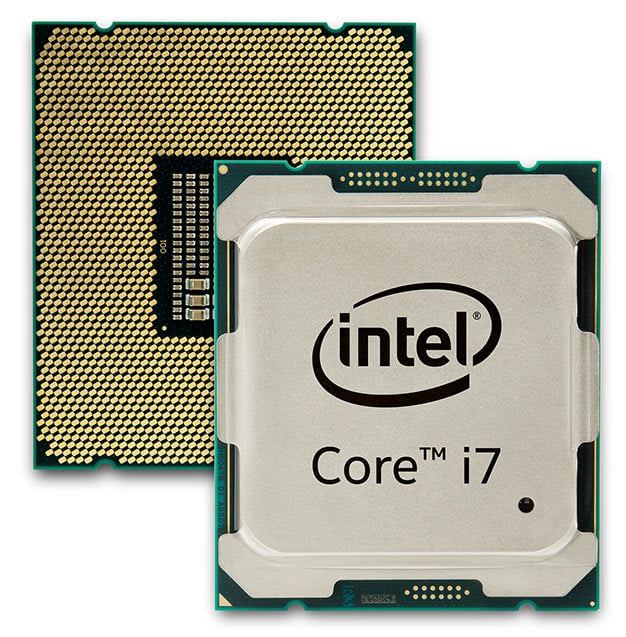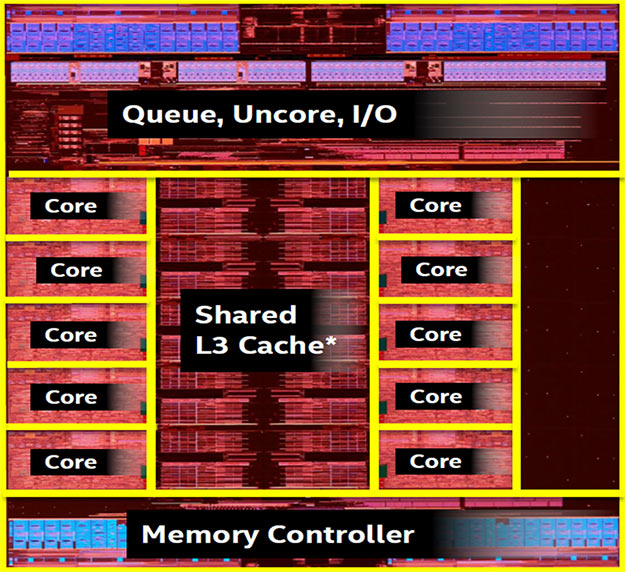Intel Core i7-6950X 10-Core CPU Review: Broadwell-E Takes Flight
Intel's Core i7-6950X Broadwell-E 10-Core Processor, A Beast Of Chip For Gamers And Creators
It was all the way back in August of 2014 that Intel officially launched its Haswell-E based Core i7 series processors and its companion X99 chipset. At the time of its release, Haswell-E’s top of the line, 8-core Core i7-5960X was easily the most powerful processor for multi-threaded workloads on desktop systems, though its somewhat lower frequencies allowed higher-clocked mainstream Core i7 series processors to pull ahead in single or lightly-threaded tasks.
For roughly 21 months, the Core i7-5960X has remained Intel’s flagship Extreme Edition processor. Of course, we had more than a hunch a successor was in the works, and got to show you some enterprise-class Broadwell-E based processors in the interim. In addition, Intel has since released its mainstream Skylake-based Core series processors as well, but a true successor to the Extreme Edition remained relegated to the rumor mill – and Intel’s performance labs – until now.
Today, Intel is taking the wraps off of an entire family of Broadwell-E based Core i7 series processors, led by the new flagship, Core i7-6950X. We’ve been playing with the Core i7-6950X for a while now and have pertinent details and performance data to share with you here. As you’ll see in the pages ahead, this 10-core / 20-thread beast has some serious horsepower lurking under its heat spreader along with support for some new technologies. Take a look...
For roughly 21 months, the Core i7-5960X has remained Intel’s flagship Extreme Edition processor. Of course, we had more than a hunch a successor was in the works, and got to show you some enterprise-class Broadwell-E based processors in the interim. In addition, Intel has since released its mainstream Skylake-based Core series processors as well, but a true successor to the Extreme Edition remained relegated to the rumor mill – and Intel’s performance labs – until now.
Today, Intel is taking the wraps off of an entire family of Broadwell-E based Core i7 series processors, led by the new flagship, Core i7-6950X. We’ve been playing with the Core i7-6950X for a while now and have pertinent details and performance data to share with you here. As you’ll see in the pages ahead, this 10-core / 20-thread beast has some serious horsepower lurking under its heat spreader along with support for some new technologies. Take a look...
|
|
|
The Core i7-6950X’s high level specifications and features read much like the Haswell-E based Core i7-5960X. The two processors technically share the same base and turbo frequencies, have the same number of PCI Express lanes, they both support quad-channel DDR4-memory configurations, and use the same 2011 v3 socket and X99 chipset. There are some noteworthy differences, however.
Broadwell-E based desktop processors will pack up to 10 cores (20 threads), they have more cache memory (2.5MB on a 10-core CPU, with up to 25MB of shared LLC), they’re manufactured using a more advanced process, and support the latest iteration of Intel’s Turbo Boost technology – dubbed Turbo Boost Max 3.0 – which helps boost performance for both single and multi-threaded workloads. Broadwell-E processors also have the same 140 watt TDP and will work in existing X99-based motherboards after a firmware update. The maximum officially supported memory speed has been upped to 2400MHz as well, versus 2133MHz with Haswell-E.
The Broadwell-E based Core i7-6950X’s die is pictured above. They are manufactured on Intel’s 14nm Tri-Gate process and feature approximately 3.2B transistors, with a die size around 246.3mm2. That’s a decent sized jump in transistor count versus the 2.6B in Haswell-E, but it's actually delivered in a smaller die size, thanks to Intel's more advanced manufacturing process.
The die is arranged with the shared L3 / last level cache in the center, flanked by the processor cores on either side. All of the chip’s IO, queue, and uncore elements are situated at the top; the memory controller is at the bottom. In a fully configured Broadwell-E die like the one used in the Core i7-6950X, all of the blocks in the chip are enabled. In the lower-end 8 and 6 core versions, however, some processor cores and their associated L2 and L3 cache have been disabled.
As we noted, in addition to having more cores and cache, Broadwell-E also offers support for Intel’s new Turbo Boost Max 3.0 technology. For the last few generations, Intel’s desktop processors have featured Turbo Boost technology that dynamically increases the processor frequency when the workload demands it, power and thermals permitting. With Turbo Boost, processors can ramp up clocks to more quickly tackle heavy workloads, and then clock back down to conserve power when maximum throughput isn’t needed. The Core i7-6950X’s base clock is 3.0GHz, for example, but it can turbo up to 3.5GHz.
Turbo Boost Max 3.0 technology adds a new kicker, however. With Turbo Boost Max 3.0 technology, single-thread performance can be further improved by identifying the fastest core on the processor die at a particular moment and directing critical workloads to that core first. So, not only does the processor’s frequency ramp up when needed, but workloads are also directed to the fastest possible core available.
Turbo Boost Max 3.0 technology requires the installation of a driver and utility that launch with Windows. With the utility, users can create custom profiles to optimize performance for specific apps, enable or disable Turbo Boost Max 3.0, view the core list in order of performance (fastest cores are listed at the top) and set application priority or affinity. As you’ll see a little later, Turbo Boost Max 3.0 technology, along with the architectural advantages in Broadwell-E and the platform’s support for faster memory, results in significant performance gains over Haswell-E across the board.













